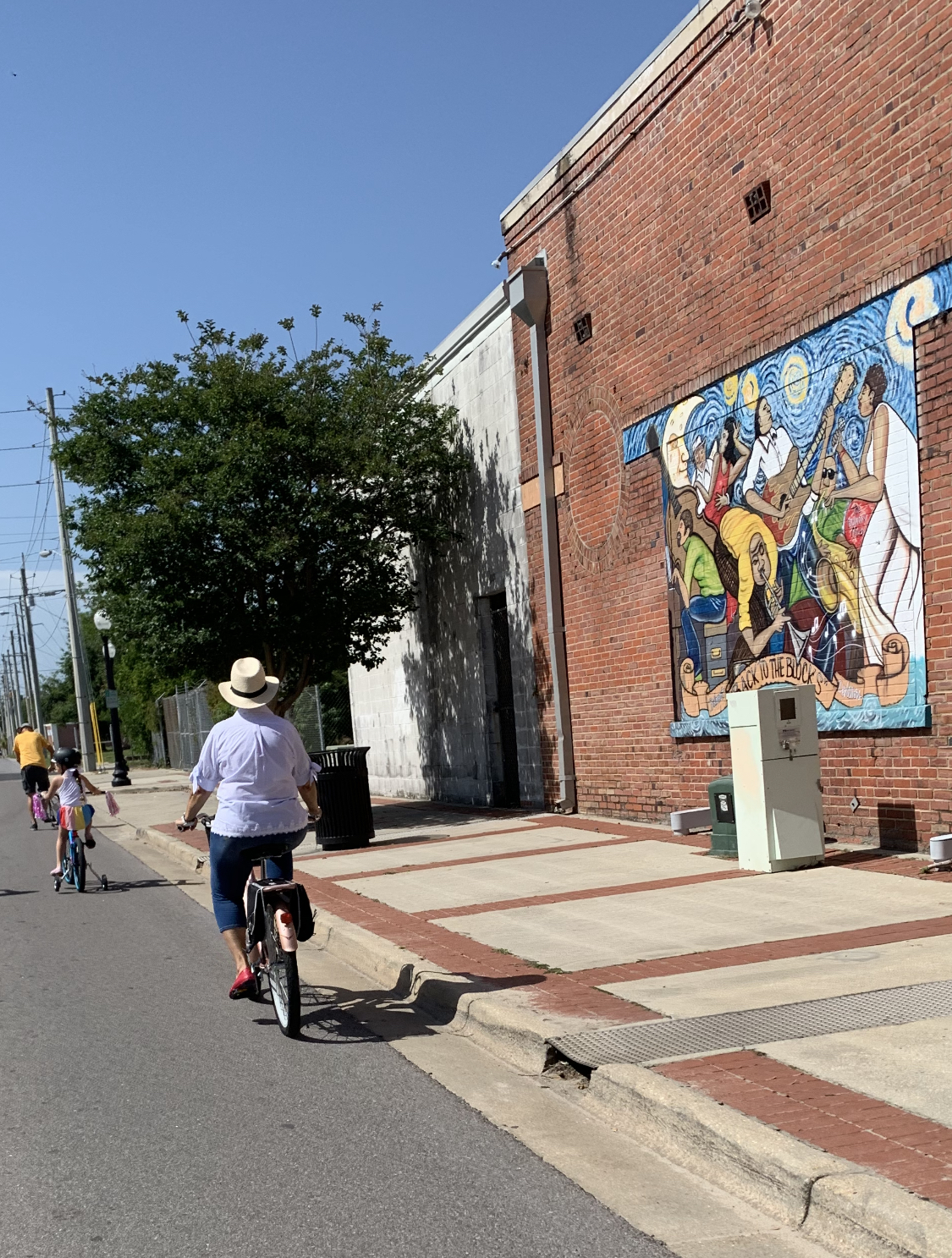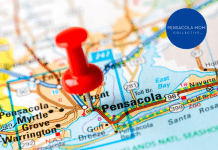
Acknowledging All of Our History
Pensacola has always been a pretty progressive town. Yes, there has been a clear distinction between color and class, and it is important to know and share these experiences. More importantly, it helps to put another layer of understanding on the complete history of where you are or where you came from.
I myself felt an immediate kinship to these places and stories. In some ways, more so than Washington, D.C., where I was born and raised and my actual Caribbean heritage. The creole history of Pensacola resonates deep within me. For that reason, it has always felt like home.
Here the history runs deep, and the urban core is the most frequented part of the city by residents and visitors alike. Next time you’re in downtown Pensacola, keep these places and people in mind.
Belmont-DeVilliers
Reus St.-A St./Cervantes St.-Garden St.
Most often referred to as The Blocks, it was the epicenter of black business and life during the Jim Crow era when blacks were removed from their downtown places of business. Today, it is best known for its various restaurants.
Belmont-DeVilliers was once a stop on the “Chitlin Circuit” – part of a network of venues that promoted musicians from the time of the blues through the rock ‘n’ roll era. The likes of Fats Domino, Aretha Franklin, and Louis Armstrong performed here. The Blocks was honored with a Mississippi Blues Trail marker – it is Pensacola’s very own “Home of the Blues.”
Tanyard
Reus St.-Pace Blvd./Garden St.-Main St.
Different periods of redevelopment were the downfall of this once upbeat and diverse neighborhood. It began as dwellings for the workers at the two dock companies in the waters of Bruce Beach and the surrounding area. One of those redevelopments included the Governmental Center District, during which various homes were moved to the Seville District. The Julee Cottage, constructed in 1805, owned by a ‘free woman of color,’ is part of our Pensacola Historic Village. Unfortunately, many others like the John Sunday House (1901) and Hulse House (1847) were demolished.
Palafox Sit-Ins
5 S. Palafox St.
“Sit-ins” was a term used for what proved to be an effective style of peaceful protest against the segregation of public places, more specifically lunch counters, in the 1950s and 1960s around the United States. Locally it was carried out by the NAACP Youth Council and supported by a council of ministers. Some of the children were as young as twelve years old. The sit-ins occurred at the lunch counters around the city, most notably at Woolworth’s located at 5 S. Palafox St., where The Blount Building currently stands. For 707 days, they protested non-violently. They were bullied and berated, yet they persisted and succeeded, on March 12, 1962.
Historic St. Joseph’s Catholic Church
140 W. Government St.
Founded in 1891, St. Joseph’s Parish became the Catholic Church we know today through the works of Mrs. Mercedes Ruby, sister of John Sunday. Built in 1892, St. Joseph’s is a two-story building that is situated behind the current Gothic Revival style church (1894). Its congregation consisted, and still consists, of African-Americans and Creoles, Irish, German and Italian immigrants. The three latter groups were not considered as whites during that time period in American history. This colorful congregation consisting of mostly European heritage and run by the Creoles was considered unique. Another unlikely achievement of the times was their integrated cemetery. Jim Crow laws did not formally affect the parish until 1920 when white immigrants (Irish, German, Italians) were made to attend other Catholic Churches.
John Sunday/John Sunday Society
302 W. Romana (site of demolished home)
John Sunday is a key example of how a black person could create something from very little in Pensacola, especially during a time in the country when most people who looked like him still worked the south’s plantations. He was born to a white father and an enslaved woman in 1838. Before fighting in the Civil War, he worked at the Pensacola Navy Yard. Later, he became a prominent civic leader, businessman, and landowner and was a recognized citizen in Reconstruction-era Pensacola. He held various political offices, namely the Florida House of Representatives in 1874 and our local city council from 1878 to 1881 and 1884 to 1885.
Sunday was also one of the founders of Belmont-DeVilliers, establishing this important black business district during the Jim Crow era. He owned the property where St. Joseph’s stands, as well as the property now occupied by City Hall, the M.C. Blanchard Judicial Building and the Chappie James State Building with numerous other properties of notable context. His residence stood at the corner of Reus and Romana and in 2016 was demolished for development despite efforts from local preservationists.
Chappie James Museum
1608 Dr. MLK Dr.
General Daniel “Chappie” James attended the Tuskegee Institute and instructed African American pilots during WWII. In 1975, he became the first African American to earn his fourth star and achieve the rank of General in 1975. In the Eastside neighborhood, his family home is now the Chappie James Museum. It also houses the Chappie James Flight Academy which is a STEM-based program for local children, using aviation skills to create confidence in the classroom.
Magnolia & Mt. Zion AME Cemeteries
1110 N. A St.
Between the 1100 and 1200 blocks on North A St, in what is now known as the North Hill Preservation District, these two cemeteries stand side by side and are amongst the first local cemeteries established for the black community. These cemeteries are an important archaeological record of African Americans’ efforts in the 1900s to bring together the diverse cultural communities that inhabited Pensacola and the south, be they from Africa or the Caribbean.
Bust of Dr. Martin Luther King, Jr.
N. Palafox St.
Located in Martin Luther King Plaza, the bust of Dr. King represents the efforts of many generations of African-Americans through the Civil Rights era. Historical photographs illustrate the contrast of cloaked men marching down the same street decades before this was erected, yet decades after the march in Selma, Alabama. Certainly, something to think about as we continue to work on that ‘dream.’














